Charles “Chuck” Yeager 1923-2020
By Stephen Hofer, President, Aerlex Law Group
Charles “Chuck” Yeager, the World War II fighter pilot ace and legendary test pilot who became the first person to fly faster than sound, has “flown west.”
Yeager, who was 97 years old, died Monday in a Los Angeles hospital.
On Oct. 14, 1947, Yeager, a 24-year-old Army Air Force captain, was at the controls of the Bell X-1 rocket plane when it broke the sound barrier, flying 662 miles per hour and detonating the world’s first-ever sonic boom. Yeager’s plane was dropped from the bomb bay of a B-29 bomber over the Muroc Dry Lake in California’s Mojave Desert at 25,000 feet and he soared to 45,000 feet as the X-1 accelerated to Mach 1.05.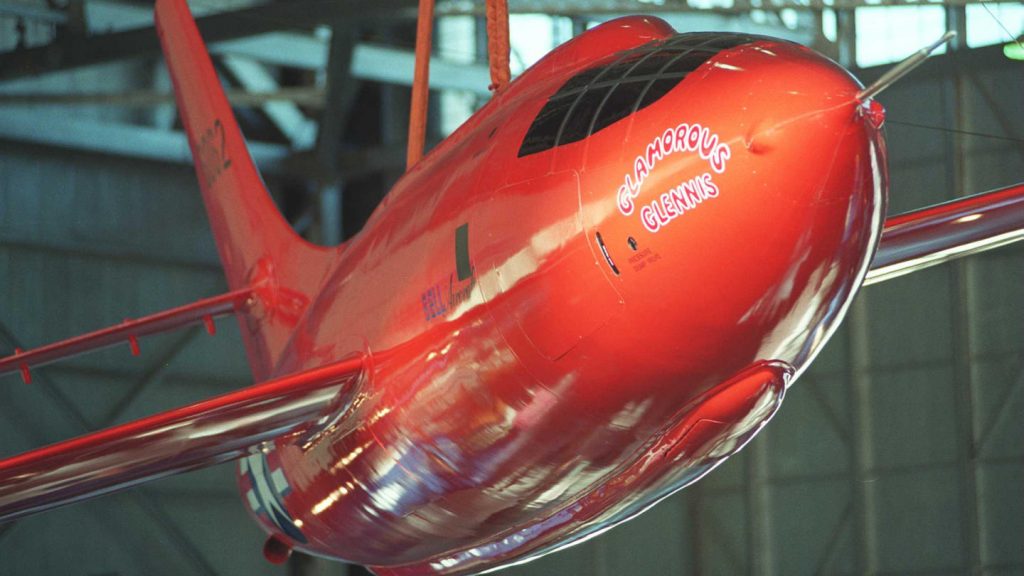
Yeager’s bright orange, bullet-shaped rocket plane, nicknamed “Glamorous Glennis” in honor of his first wife, hangs today in the Smithsonian Institution’s Air and Space Museum in Washington D.C., where it shares pride of place with the Wright Brothers’ 1903 Wright Flyer, Charles Lindbergh’s 1927 “Spirit of St. Louis” and the 1969 Apollo 11 command module, arguably four of the most famous flightcraft in human history.
I still vividly remember seeing Glamorous Glennis hanging from the ceiling of the Smithsonian when my family took me to Washington for the first time in 1963 and even then, Yeager was a legend to me. But for a younger audience, Yeager rose to prominence only when his flying exploits were highlighted in Tom Wolfe’s 1979 book and the 1983 motion picture it inspired, “The Right Stuff,” the story of the original test pilots at Edward Air Force Base and their successors in the national consciousness of the early 1960s, NASA’s Mercury 7 astronauts. Wolfe called Yeager “the most righteous of all the possessors of the right stuff.”
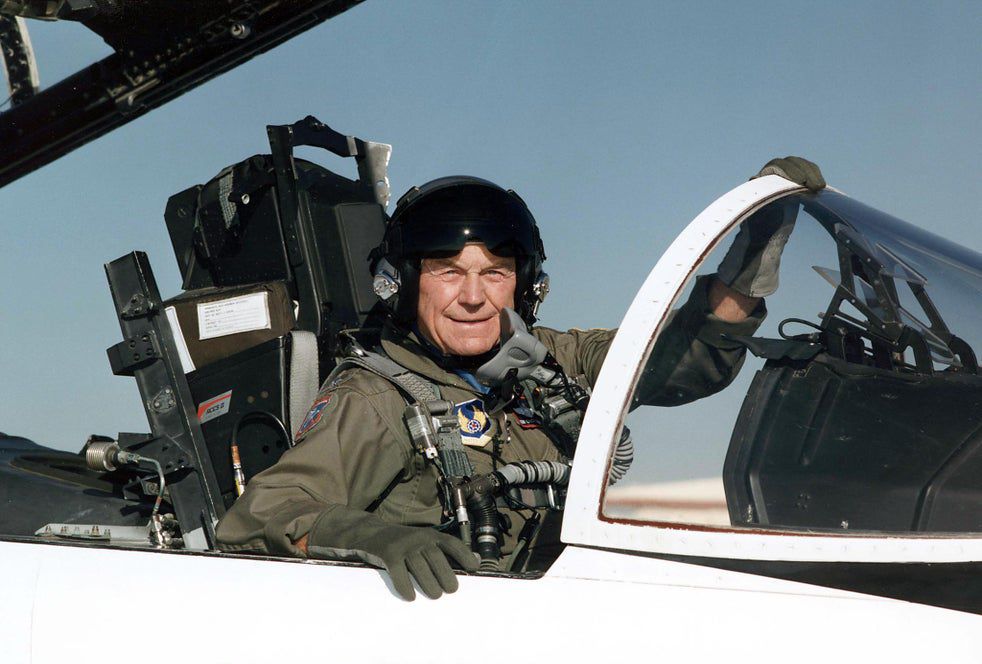 As an aviation attorney, I have had the good fortune over the years to meet many of America’s most famous pilots and astronauts, including Neil Armstrong and Edwin “Buzz” Aldrin, the first two men to walk on the moon, and Alan Shepherd, the first American to fly in space. One of my clients for many years was R.A. “Bob” Hoover, described by General Jimmy Doolittle as “the greatest stick-and-rudder man who ever lived.” Hoover and Yeager were good friends and Hoover was Yeager’s backup pilot in 1947 and flew the chase plane when Yeager broke the sound barrier.
As an aviation attorney, I have had the good fortune over the years to meet many of America’s most famous pilots and astronauts, including Neil Armstrong and Edwin “Buzz” Aldrin, the first two men to walk on the moon, and Alan Shepherd, the first American to fly in space. One of my clients for many years was R.A. “Bob” Hoover, described by General Jimmy Doolittle as “the greatest stick-and-rudder man who ever lived.” Hoover and Yeager were good friends and Hoover was Yeager’s backup pilot in 1947 and flew the chase plane when Yeager broke the sound barrier.
In 2009, the Aero Club of Southern California named Hoover as the winner of its annual Howard Hughes Memorial Award. Traditionally, the winner of the Hughes Award receives the trophy from one or more of the past Hughes recipients and the newest honoree gets to choose his presenter. On February 4, 2010 in a ceremony held at the Jonathan Club in downtown Los Angeles, Bob Hoover was presented with the Hughes trophy by two of his best friends, 1983 winner Chuck Yeager and 2003 winner Neil Armstrong. Because Bob Hoover was a client and friend of mine, I was invited to attend the ceremony and was thrilled afterward when Bob introduced me to both Yeager and Armstrong.

I’ve written before for the Aerlex Law Group website about my experience of meeting the first man to walk on the moon (see July 20, 2019, https://www.aerlex.com/celebrating-the-moon-landing-fifty-years-ago-today) and while Armstrong was friendly, he was also somewhat reserved, validating what I had always heard about his modest and reserved personality. Yeager, on the other hand, was affable and gregarious. Learning that I was Hoover’s lawyer, he teased me, in that famous West Virginia drawl of his, about being an attorney at law and said that while lawyers generally were not among his favorite folks, if Bob said I was okay, he would make an exception in my case. We talked for several minutes, both one-on-one and then with Bob and Bob’s wife, Colleen. Yeager made you feel as if it was more than a celebrity meet-and-greet; he left the impression that he was generally interested in you as a person and happy to have made your acquaintance. The photograph of me above with Chuck Yeager demonstrates his ease of manner – how often would a celebrity throw his arm over the shoulder of someone he had just met to take a picture?
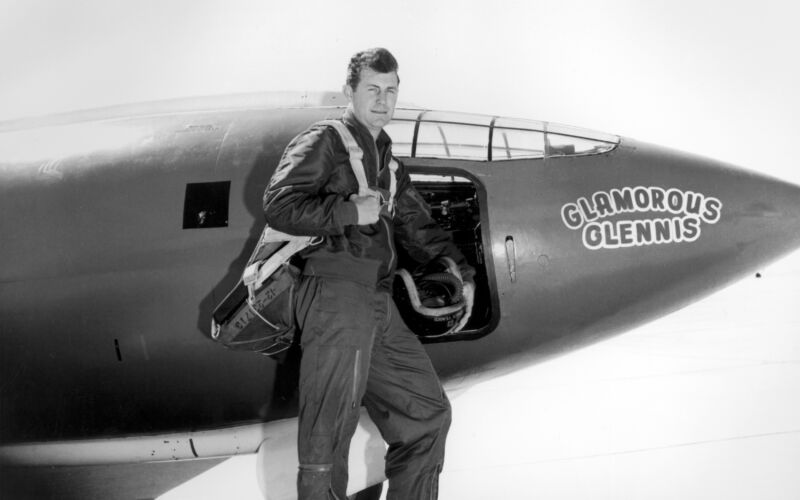
While Chuck Yeager will always be remembered as the first man to fly faster than the speed of sound, it was by no means his own accomplishment in the air. Yeager enlisted in the Army Air Corps after graduating from high school in 1941. He started as an aircraft mechanic and even though he became airsick during his first airplane ride, he jumped at the chance to enroll in a program that allowed enlisted men to become pilots. Yeager ended up shooting down 13 German planes on 64 missions during World War II, including five in a single day. He was shot down over German-held France but escaped with the help of French partisans. After the war, he became a test pilot, first at Wright-Patterson Air Force Base in Dayton, Ohio, and then later in Southern California.
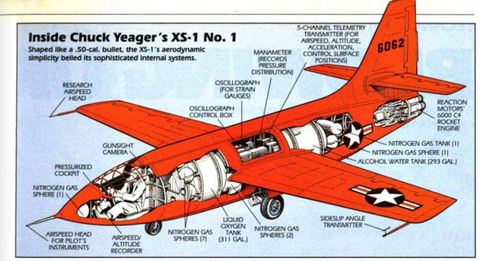 After breaking the sound barrier, Yeager flew an X-1A to a record of more than 1,600 mph on December 12, 1953. He returned to combat during the Vietnam War, making bombing and strafing runs over South Vietnam. Yeager also commanded Air Force fighter squadrons and wings and the Aerospace Research Pilot School for military astronauts before retiring as a U.S. Air Force brigadier general in 1975. President Harry S. Truman awarded Yeager the Collier air trophy in December 1948 for breaking the sound barrier. He was also awarded the Silver Star, the Distinguished Flying Cross, the Bronze Star, the Air Medal, the Purple Heart, and the Presidential Medal of Freedom in 1985.
After breaking the sound barrier, Yeager flew an X-1A to a record of more than 1,600 mph on December 12, 1953. He returned to combat during the Vietnam War, making bombing and strafing runs over South Vietnam. Yeager also commanded Air Force fighter squadrons and wings and the Aerospace Research Pilot School for military astronauts before retiring as a U.S. Air Force brigadier general in 1975. President Harry S. Truman awarded Yeager the Collier air trophy in December 1948 for breaking the sound barrier. He was also awarded the Silver Star, the Distinguished Flying Cross, the Bronze Star, the Air Medal, the Purple Heart, and the Presidential Medal of Freedom in 1985.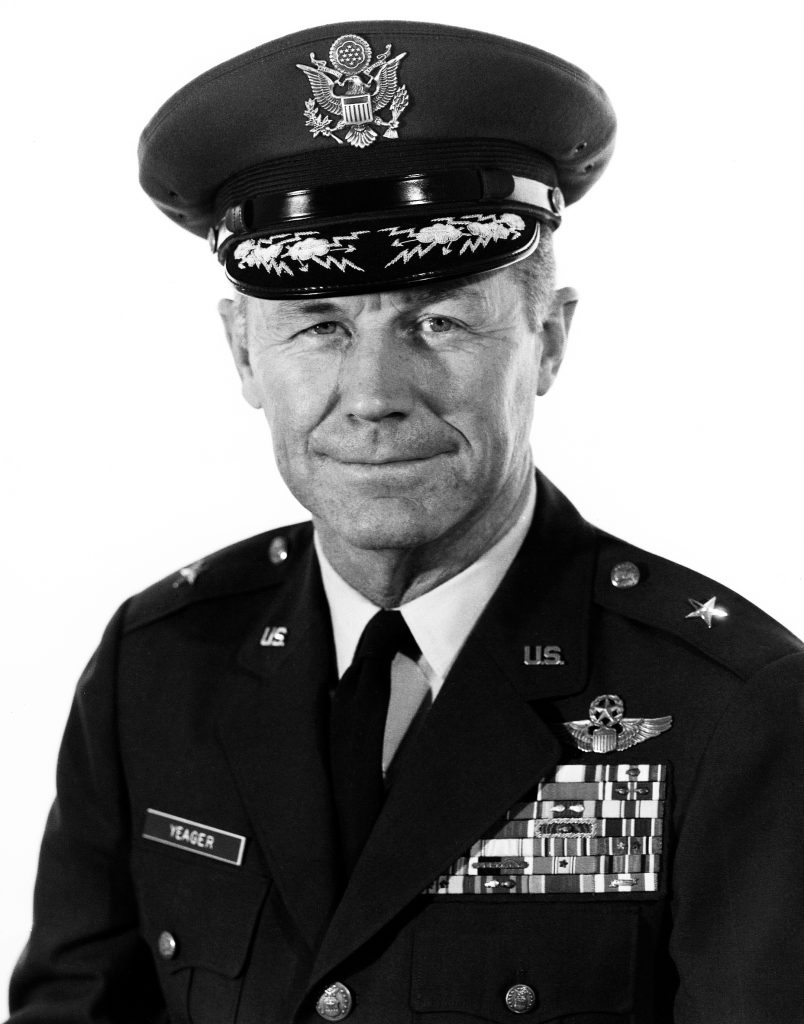
In the course of his long career, Yeager said he flew more than 340 types of military aircraft all over the world and logged more than 10,000 hours in the air. On Oct. 14, 2012, 65 years to the minute after his most historic flight, the 89-year-old pilot commemorated the accomplishment, flying in the back seat of an F-15 Eagle as it reached supersonic speed more than 30,000 feet above Edwards Air Force base.
Rest in peace, General Yeager.
